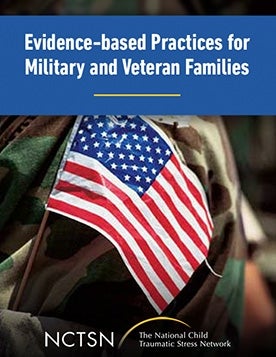
Evidence-Based Treatments: Elements or Adaptations for Military Family-Informed Care
Explores elements and strategies to adapt evidence-based treatments for military children and families.
The following resources on child trauma were developed by the NCTSN. To find a specific topic or resource, enter keywords in the search box, or filter by resource type, trauma type, language, or audience.

Explores elements and strategies to adapt evidence-based treatments for military children and families.
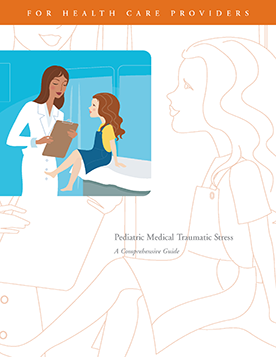
Offers a compendium of tools to guide medical professionals in effectively assessing and treating medical traumatic stress in children and families. This toolkit helps providers address the emotional, as well as the physical side of trauma.

Provides information on how to talk to children about mass shootings. This tip sheet describes ways to talk to children about mass violence events that involve a shooting. It gives tips about how to start the conversation, common reactions children may have, and how to seek help if needed.
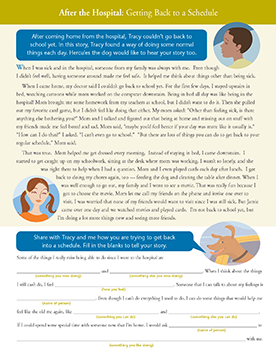
Provides information to children who have experienced medical trauma.
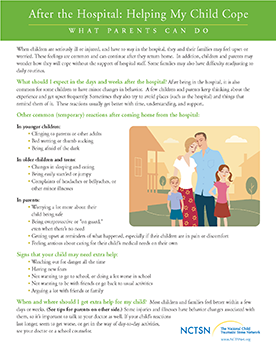
Offers tips parents can use to help themselves understand a child's behavior following a hospitalization. These tips assist parents with helping their child cope after a hospital stay.
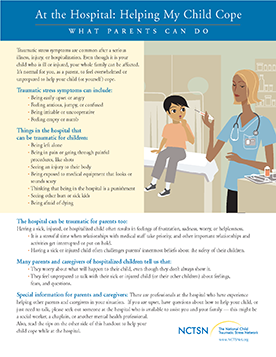
Offer tips on ways parents can cope with their concerns during their child's hospital stay. This fact sheet assists parents with ways to help their child cope with being in the hospital.

Offers parents guidance to parents about how to support your teen while at the hospital before, during, or after a medical procedure.

Offers activities and a scenario for youth who have been ill or injured to help understand what it is they might be feeling.
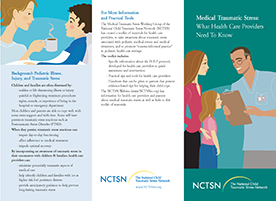
Provides a brief overview of medical traumatic stress, the D-E-F protocol (Reduce Distress, Promote Emotional Support, and Remember the Family) and traumatic stress reactions.
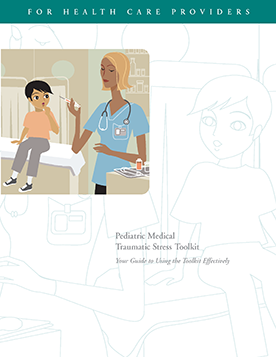
Outlines how to use the Pediatric Medical Traumatic Stress Toolkit for Health Care Providers effectively.
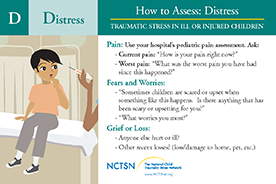
Provides tips for medical professionals on how to assess distress in ill or injured children and how to help their families.
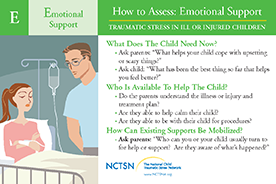
Provides tips for medical professionals on how to assess emotional support in ill or injured children and how to help their families.